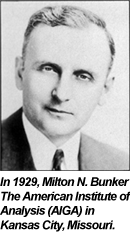Graphoanalysis is the most systematic and best researched of all methods of handwriting analysis (graphology). It is a scientific system for identifying and assessing the character and personality of an individual through a study of their individual handwriting based on a well-defined, standardized method. Specific strokes are related to particular personality traits. By evaluating the relative strengths of different traits and the effect of one trait upon another, a Graphoanalyst can derive a comprehensive description of an individual’s personality.
Physiologically, handwriting is actually brain-writing—an activity controlled by the brain. The impulse to write originates in the cerebral cortex and travels through the nerves to the muscles of the hand, resulting in unique, controlled movement. These movements are displayed on paper, portraying the mental activities of writers as they create a picture of their personal character. Humans are expressive beings and reveal their makeup in many ways—through facial expression, the pitch and tone of their voice, and their posture and gestures. Taken as “frozen gesture,” handwriting leaves behind it an objective trail that can be examined for patterns.
By themselves, handwriting traits are not considered good or bad since one person may find a constructive use for a trait that in another is a drawback. A personality may consist of scores of traits, each adding to the mix of one’s unique character. The process begins in early childhood as scribbles, and scrawls evolve into simple letters, steadily revealing the personality in development. While some handwriting elements are basic and outside the writer’s awareness, others are of a more temporary nature, changing with circumstances, and some can be chosen consciously. During major life changes, handwriting typically adjusts to reflect how the experiences are integrated into one’s personality.
HISTORY OF GRAPHOLOGY
In 1622, Camildo Baldo, an Italian physician and professor of philosophy at the University of Bologna, published the first book analyzing character through the study of handwriting.
In the late 1800s, Abbe Michon, headmaster of a school in Paris and a respected intellectual, wrote several books on the subject and coined the name “graphology.” His successor, Crepieux Jamin, later classified features of graphology into a comprehensive system.
 Dr Ludwig Klages (1872-1956), a German handwriting analyst, philosopher, and psychologist, applied the Gestalt theory to the subject, advanced his theories of rhythm and “form level,” and significantly broadened the scope of graphology. Klages’s most significant work, Handwriting and Character, was published in 1940. He is known today as the “father of modern Graphology.”
Dr Ludwig Klages (1872-1956), a German handwriting analyst, philosopher, and psychologist, applied the Gestalt theory to the subject, advanced his theories of rhythm and “form level,” and significantly broadened the scope of graphology. Klages’s most significant work, Handwriting and Character, was published in 1940. He is known today as the “father of modern Graphology.”
Max Pulver, a Swiss professor at the University of Zurich, applied the psychoanalytic approach of Freud and psychological methods of Adler and Jung to handwriting analysis. In Pulver’s book, Symbolism of Handwriting (1940), he discusses the interpretation of handwriting and its relationship to some unconscious mythological or ancient symbols. He developed the importance of interpreting upper, lower, and middle zones of writing.
The modern scientific method (Graphoanalysis®) of analyzing individual strokes in handwriting began in 1915 with Milton Newman Bunker, a teacher and expert in several shorthand systems.
He recognized that each of his students formed shorthand strokes in a unique manner. Upon observing this variation in their exercises, his curiosity led him to investigate how a stroke might reflect a writer’s personality and character. The same kind of strokes, he discovered, could be found in writing in any language and in doodles, and even if the pen were held between the teeth, the toes, or in the crook of an elbow. He eventually founded the International Graphoanalysis Society, which has continued his research and teaching to the present day and graduated thousands of Graphoanalysts from its courses.










